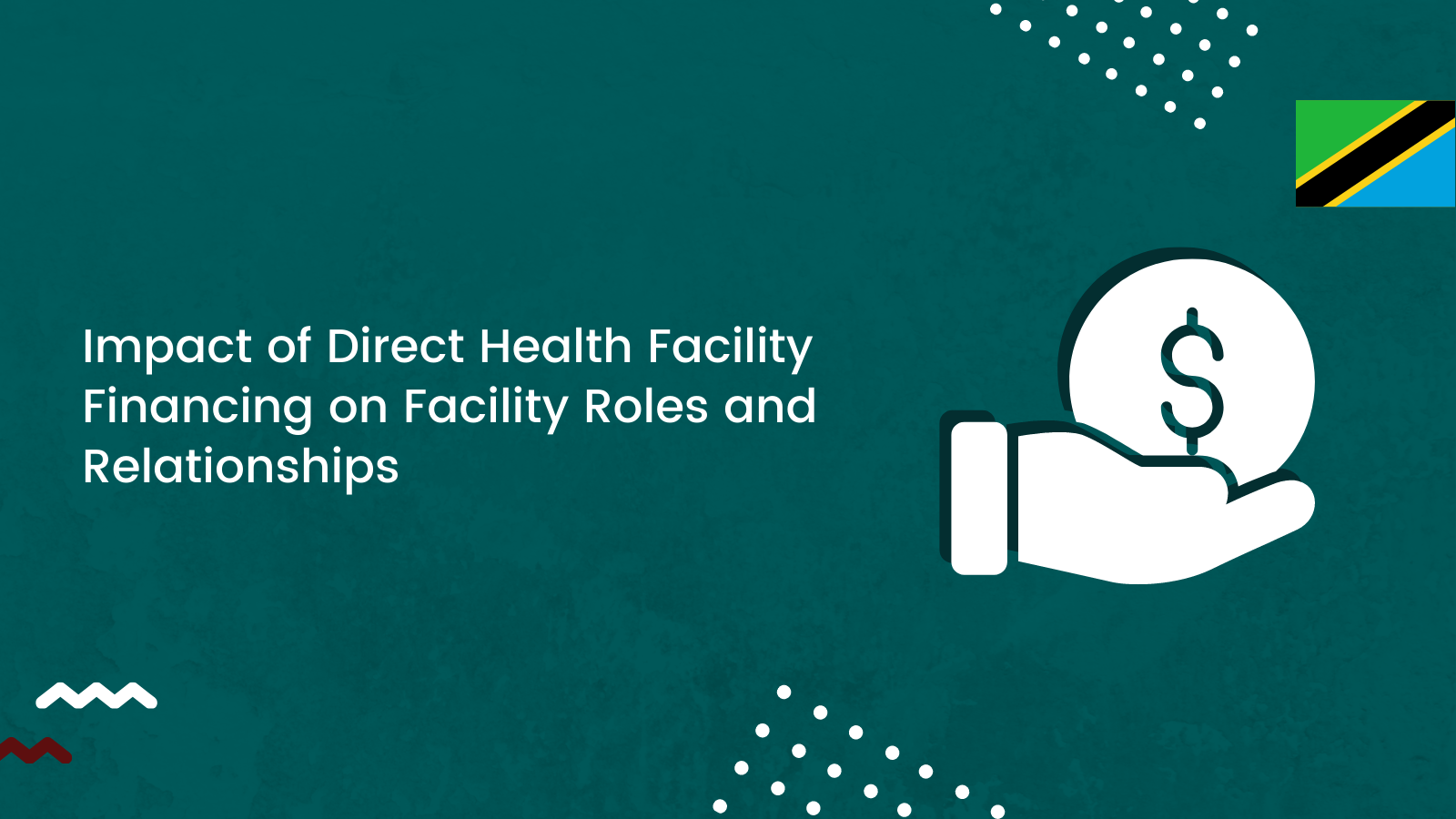Implementation of direct health facility financing (DHFF) in Tanzania began in the 2017/18 fiscal year with the goal of improving primary healthcare (PHC) services through fiscal decentralization. The centerpiece of DHFF is the direct transfer of funds from the Ministry of Finance and Planning to frontline PHC facilities to enhance service delivery. The shift was geared towards increasing service delivery efficiency by reducing leakages and enhancing predictability and timeliness of funds received at frontline PHC facilities.
Frontline PHC facilities are health production units in-line with the notion of the Grossman’s model of Human Health Capital where the health services delivered are inputs in producing health. There are several key actors in the production of PHC: the health facility manager (also known as health facility in-charge), health facility staff, health facility governing committees (HFGCs), local government authorities (LGAs), and councilors. These actors play different roles which differ in significance but are essential for PHC facilities.
Tanzania’s public financial management framework defines the nature of the roles and relationships between the actors. The relationships are important as they determine how effective the various health facility actors – facility in-charge, facility governing committee, staff, and local government authority – are in service delivery. Prior to DHFF, disbursement of funds to PHC facilities passed through 2 levels from the Ministry of Finance and Planning to the President’s Office-Regional Administration and Local Government (PORALG) and then the respective LGA. The multiple levels led to leakages and delays that negatively impacted service delivery and the role and relationships between the various actors. PHC providers did not have autonomy of planning, budgeting and executing their budgets as LGAs undertook most planning and implementation decisions. This skewed power towards LGAs and councilors who approved council plans and budgets at the expense of PHC facilities and their actors – facility in-charges, facility staff and HFGCs. LGAs were thus the most important actors in PHC with the frontline facilities merely being implementors of decisions without any influence. This structure diminished the role of individual health facilities and did not take into account community priorities.
DHFF shifted the control of funds from LGAs to PHC facilities and significantly altered the roles and relationships between these actors in the production of PHC. DHFF necessitated facility involvement in planning, budgeting and implementation activities that were previously undertaken by LGAs. PHC facilities now lead the planning, budgeting and implementation of plans – with funds they control – while facilitating inclusion of community priorities in facility planning and budgeting. DHFF has transformed the role of PHC providers from passive implementors of LGA directives to managing their own affairs with LGAs transitioning into a supervisory role. These changes in roles have enhanced facilities’ budget execution and reporting capacity resulting in improved execution of budgets and more timely and comprehensive reports, which have contributed to better PHC facilities’ relationships with LGAs.
DHFF has also positively impacted the PHCs’ capacity to carry out their roles. DHFF has improved the flow of resources – by reducing leakages and improving timeliness of disbursements – which has contributed to reduced stockout of medicines and medical supplies, and renovations and infrastructure improvements. This has improved the working environment and staff morale improving relationships between facility management and staff.
The DHFF requirement for health facility governing committees’ involvement in planning, budgeting, and expenditure processes has increased cooperation and improved relationships between communities and facility management. DHFF has significantly enhanced the role of HFGCs in PHC facilities by increasing their involvement in facility planning and implementation. HFGCs’ involvement in facility governance facilitates inclusion of the community voice and influences local priorities in service delivery. Strengthening HFGCs is imperative to enhance the capacity of communities to carry out their oversight roles and responsibilities. In conclusion, DHFF has improved the funds flow to PHC providers, clarified roles between actors and improved relationships critical to the production of PHC. In so doing, DHFF is contributing directly to production of health and improving the health status of Tanzanians.

